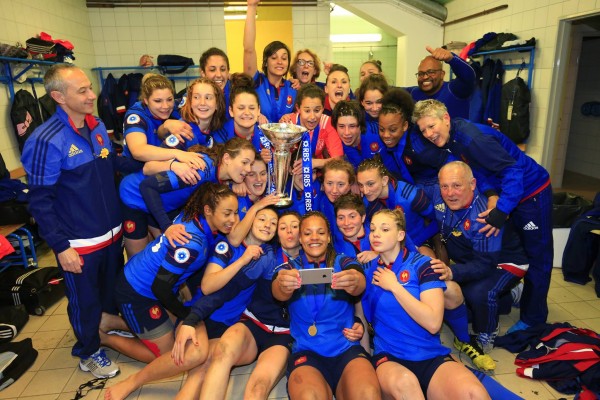2016 6 Nations Review
John Birch and Ali Donnelly look back at the 2016 women's rugby 6 Nations where increased crowds and broadcast coverage wasn...
Published by Alison Donnelly, March 21, 2016
5 minute read

Let's be honest, it has not been a classic women??s rugby 6 Nations Championship.
There were some dramatic improvements as the weeks went on, but in the early couple of rounds, fluffed passes and poor handling was a theme from all teams as relatively new-look backlines failed to take advantage of the openings more experienced forwards had won for them. Only perhaps in the final two weeks did the balance start to move away from the forward battering rams, but even so it is a pretty unique tournament when the leading points scorer for the champions is the hooker!
The absence of sevens players has been a factor here and this was at its most telling when Ali Miller returned from sevens duty for Ireland in the final two rounds and?easily surpassed any of her teammates as being her country??s best back. It is difficult for Ireland, England and France to operate without their cutting edge, first choice finishers, but such is the deal in Olympic year and what it has forced, at least, is the widening of depth across the backlines and backrow across the top three teams.
In addition this year, home advantage has perhaps rarely been more decisive. Eleven of the 15 games were won by the home side - in 2015 it was only eight. Perhaps it??s an indication of the growing competitiveness of all teams that the advantage of the home crowd was so often a major factor.
And a word about the crowds. Not only were they huge in France, they were up in possibly five out of six nations. In France they have never been bigger, including an all-time record 11,700 in Perpignan for Ireland and a sell out of near 10,000 in Vannes for England.
Ireland's move to Donnybrook was also fully justified by crowds several times larger than could ever be fitted into Ashbourne - and that despite the fact that Ireland were not in the running for the title for their final two home games. Italy too played in front of near full stands, Wales were reportedly pleased with the turnout in Neath, and Scotland's decision to run a double-header with the men's U20s in Cumbernauld increased the audience. Only England's crowds appeared to be, at best, stable - indeed the stay-on crowd after men's game at Twickenham appeared to be among the lower end?of what they would normally expect. ?
One remarkable fact was that - in this age of multi-channel TV and easily streamed video - this was the first year when every game was available to a home audience, either broadcast or streamed. In France the audience has grown so much that broadcasters are now having to bid for the rights to home games as France 4 have discovered that women's rugby brings in an audience up to twice the size of programmes normally shown in the same slot.
Unfortunately this remains a distant dream elsewhere, though the efforts of all home unions to stream games has been a step forward. However, the drawback of TV coverage in France is that - because TV rights to the women's championship are not controlled by the 6 Nations - this tends to make the games unavailable elsewhere unless another home broadcaster takes the French feed. This cannot always be relied upon.
On the field it always looked like the tournament would be decided between France and England at Vannes in the final week, but there were still some surprises along the way - not least Wales' win against the eventual champions in week three. However, the size of Ireland's win in the opening week - also against Wales - was unexpected, while Italy's performance against England in week two was their best ever against the World Champions by far. It is, perhaps, significant that all of these surprise games were in the opening three weeks of the tournament.